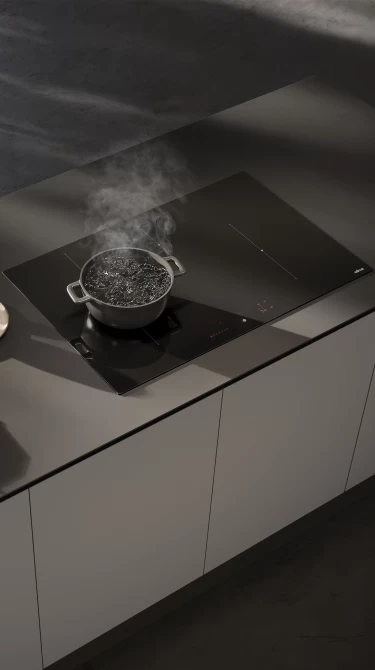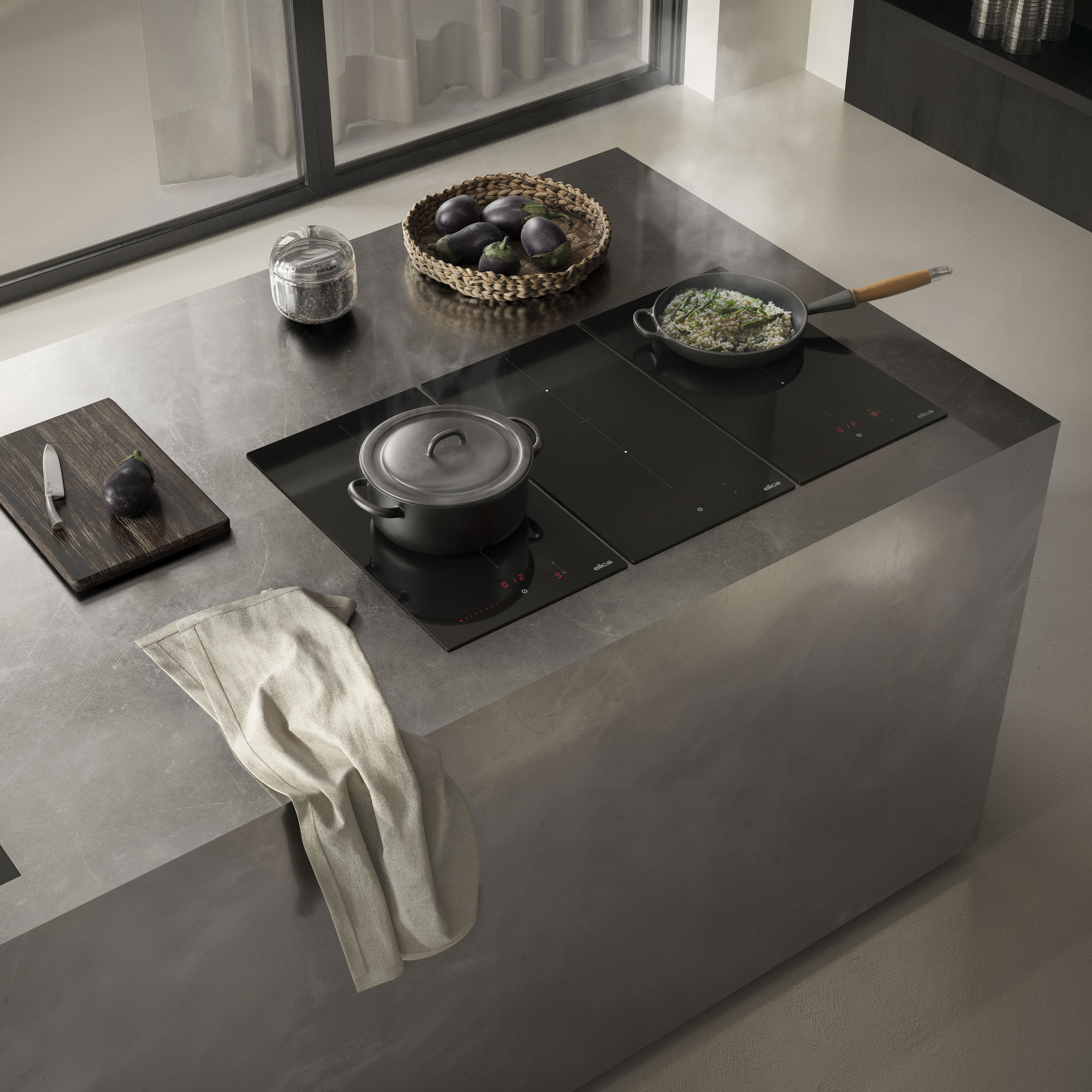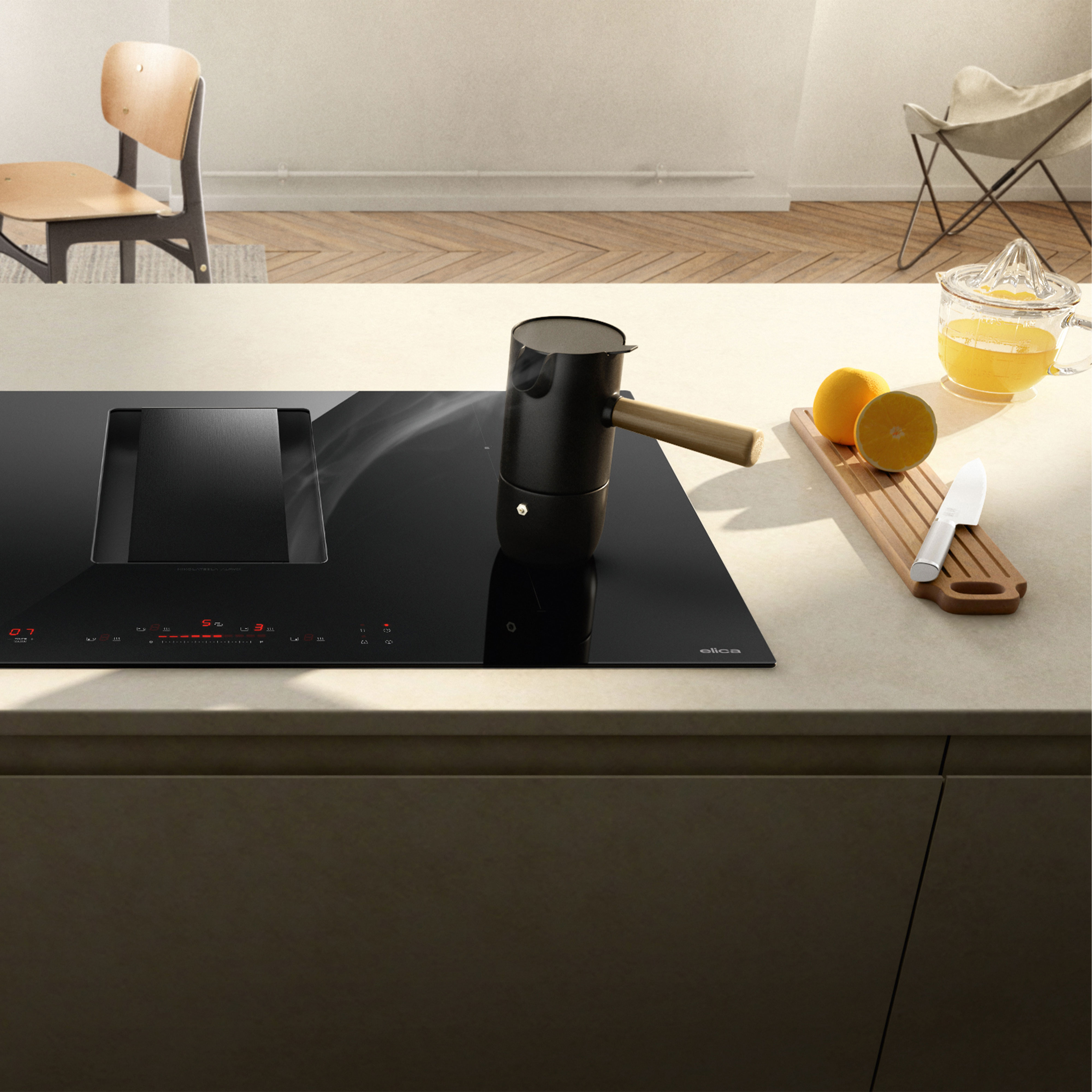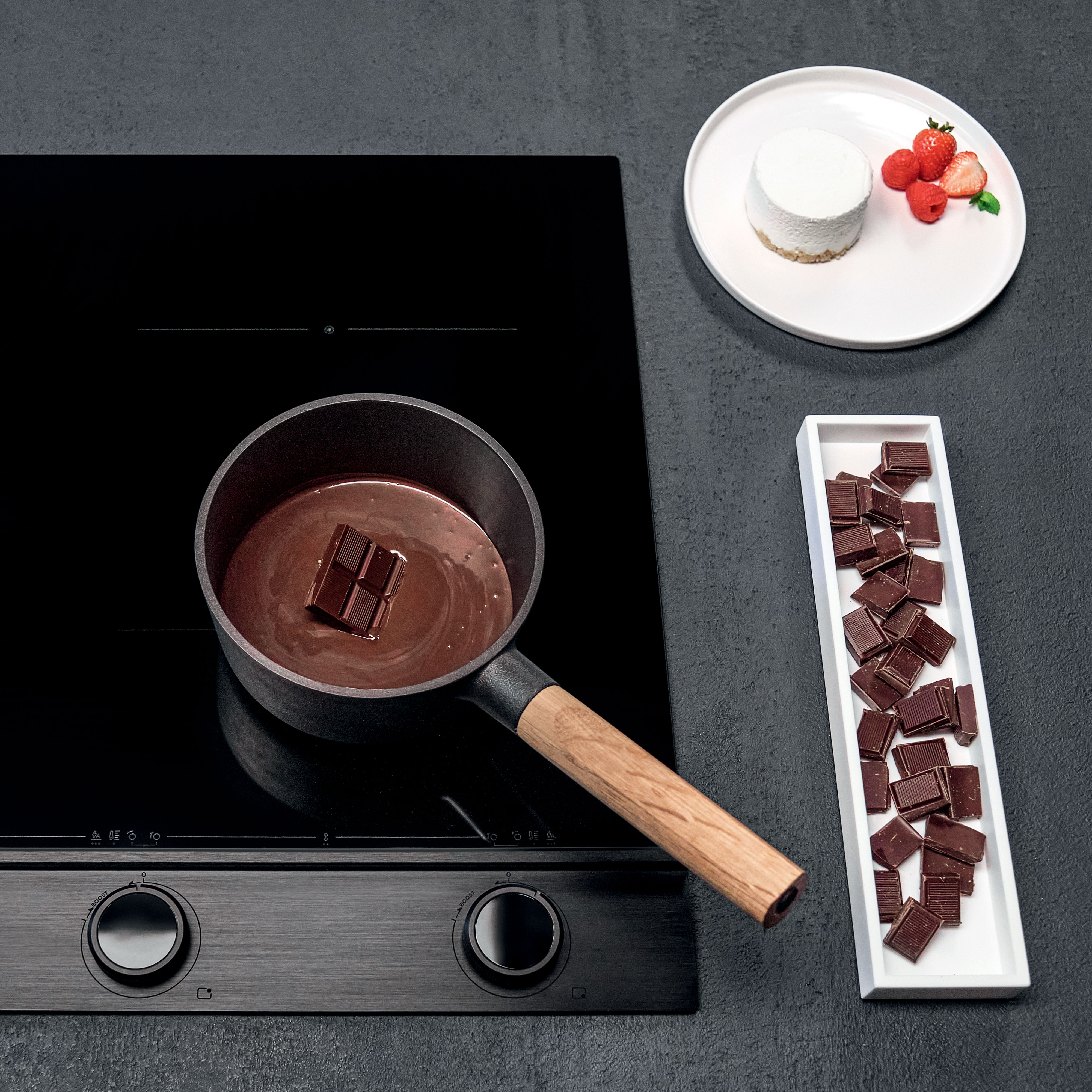
If you're thinking about installing an induction hob in your kitchen, you are probably wondering which pots, pans and moka pots will work on it. In most cases, you won't be able to continue using your regular cookware, which is designed for gas or electric hobs. That’s because induction hobs operate differently, so you will need to use cookware with specific characteristics.
Induction hob: how it works
An induction hob works by means of electromagnetic induction. This is completely different from how traditional hobs work, because it changes both how heat is generated and how it’s transferred to your cookware.
-
Gas hob: heat is generated through combustion
-
Electric hob: heat is generated by electric heating elements
-
Induction hob: heat is generated by a magnetic field produced by metal coils
The benefits of induction
When you switch on an induction hob, the heat generated by the coils transfers directly to the cookware. This process provides a host of benefits, both in terms of cooking times and energy consumption.
-
Uniform heating, with no temperature fluctuations, for consistent cooking results
-
Fast cooking times, as the heat is transmitted directly from the hob to the pan
-
Energy efficiency: minimal heat loss, unlike electric and gas hobs, which can lose up to 50% of their heat.
-
Savings: you only pay for the energy it takes to cook, thus reducing both costs and environmental impact
Induction cookware: how to tell what works
As we’ve seen, induction hobs work differently from traditional hobs. That’s why you probably won’t be able to continue using cookware designed for gas or electric hobs: their materials and construction aren’t compatible with induction cooking.
Induction cookware: materials and construction
To get the best performance from an induction hob, you need cookware with specific characteristics. Starting with the construction, it must be made from:
-
iron or cast iron
-
stainless steel, enamelled steel
These materials are compatible because they harness the magnetic field’s energy and absorb heat efficiently. The same applies to cookware specifically designed for induction hobs.
Induction cookware: materials to avoid
Many materials simply do not work on an induction hob. These include: ceramic, porcelain, aluminium, copper, brass, glass and stone, to name a few. These materials can’t absorb the heat generated by the magnetic field and therefore can’t cook food.
However, there is one exception - and it lies in the base. An aluminium pan with a ferrous base, for example, will deliver perfect results, as the contact surface is made from a material that can heat up through induction.
Induction cookware: label and symbol
It’s easy to tell if a pan is suitable for an induction hob: just check the label when buying, or look for the spiral or coil symbol on the bottom of the pot or pan.
Induction cookware: benefits
Induction-compatible cookware, such as pots and pans made from iron, steel and similar materials, absorbs the hob’s heat instantly, resulting in fast and efficient cooking. A benefit that allows you to:
-
bring water to boil in just a few minutes
-
evenly cooking dishes like broth, sauces, risotto, and hearty soups
-
enhance depth of flavour in slow-cooked meals like roasts, braised dishes and stews
Moka pots and induction
What about coffee? Can I still use my moka pot? Like many pots and pans, traditional moka pots probably won’t work on an induction hob. That’s because classic models are made of aluminium, which doesn’t interact properly with the magnetic field and therefore can’t heat up.
Induction compatible moka pots: buyer's guide
For great coffee with an induction hob opt for:
-
moka pots designed for induction (always check the label before buying)
-
stainless steel moka pots (ideally 18/10 stainless steel, which can also be used on conventional hobs if needed)
Induction-compatible cookware: final thoughts
We’ve covered everything you need to know about the types of cookware you'll need when switching from a traditional hob to an induction hob. Your pans, pots, and moka pots will likely need replacing, but the benefits make it well worth the change:
-
extraordinary cooking performance
-
greater energy efficiency, with less waste and virtually no heat loss
-
lower environmental impact, a pressing issue we all need to pay more attention to
One last tip: if you’re planning to buy an induction hob, take a look at the Elica collection, where you will find solutions for every kitchen style and need: extractor, large or compact hobs, all with outstanding design and pro-style features. Also available in energy classes A+ and A++.


